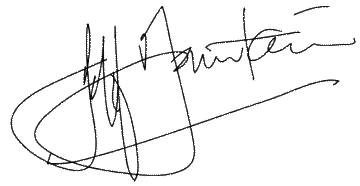Europe’s search for her soul reminds me of the story of the drunk crawling on the ground under a lamppost, looking for his keys. Asked by a passer-by where he had lost them, he pointed across the road. “Then why are you looking here?” came the obvious question. “Because it’s dark over there and here there’s light.”
Ever since the Enlightenment, European intellectuals and politicians have tried to define the identity of Europe in a variety of ways, so long as it doesn’t refer to Christianity.
Some say, ‘forget the past; we have to forge our own future, create our own destiny.’ Others insist on creating an identity based on a secular citizenship, in which creed no longer has a place. Like the drunk, they refuse to face historical reality. Europe’s roots are the keys to our identity. Which is why every summer we climb into vehicles and set off in search of Europe’s soul.
We head off, that is, seeking an answer to the question, what made Europe ‘Europe’? What was the source of her values, vitality and vision? What common identity did the inhabitants of this western peninsula of the Eurasian land mass share that set them apart from the hinterland whence they came?
The quest is not simply to satisfy historical curiosity. It is to gain perspective on Europe’s future. As Winston Churchill said, the further back to can see, the further forward you can see.
This summer again, we are consciously looking for the movers and movements who have shaped Europe’s art, architecture, cities, law, language, ideals of politics and government, education, healthcare, family and marriage, scientific development, literature and social reforms.
We know from our trips over the past six or seven years that a rich time of discovery lies ahead for the participants, who this year come from Holland, Australia, the US, England, France, Romania and New Zealand.
Pointers
Our starting point this weekend was the Dom Square in Utrecht, cradle of Christianity in Holland. Under the shadow of Holland’s tallest building, the 112-metre high Dom tower, and the Maartenkerk, we observed pointers to the dramatic megashift that European people groups like the Franks, Friesians, Germans and Vikings, experienced in the first millennium. This common experience laid the foundation of the European identity.
Marked by inlaid stones, the outlines of former churches and chapels built on this historic site reminded us of the original church built by Frankish soldiers 1400 years ago. It was dedicated to St Martin, patron saint of France. He had been radically converted through reading ‘The Life of St Antony’, father of the Egyptian Desert Fathers, and of the monastic movement itself.
That movement was to provide the buildings blocks for the civilisation that emerged in post-Roman times, well beyond the old Roman Empire.
Willibrord, missionary from England, built a church on this same site also dedicated to Martin, the name the present day gothic cathedral bears. He became known as the apostle to the Friesians.
Close to the wall of St Martin’s kloister is a large stone inscribed with Viking runes, a gift to Holland from Denmark. It is a replica of the Jelling Stone in Jutland, erected around 965 by King Harald Bluetooth. The inscription tells how Harald unified the Viking tribes and made the Danes Christian. On one side of the stone is the oldest image of Christ in Scandinavia.
Bluetooth was so-named because of his blueberry-eating habit. A fascinating feature of this stone is its Tolkien-like runes. The characters for ‘H’ of Harald (like an asterisk) and ‘B’ for Bluetooth, when combined, give us the familiar symbol on our mobile phones. As Harald united the various tribes and languages of the Vikings, so too the Scandanavian technology of ‘Bluetooth’ enabled various phone languages to communicate.
Footsteps
The Dom square thus introduces us to the process which gave birth to the entity called ‘Christendom’, the foundation of European civilisation.
Historian Norman Davies syays that it was the four centuries following Constantine that brought Europe into being, when the majority of the peninsula’s diverse peoples settled in permanent homelands and the rump of the Roman Empire became just one of the many sovereign states in a community of ‘Christendom’. ‘No one yet used the name of Europe to describe this community,’ he writes, ‘but there can be little doubt that it was already in existence.‘
In the footsteps of Willibrord, Boniface, Luther, Bach and others, we head eastwards via the Wartburg, and Wittenberg. Leipzig and Dresden to Zinzendorf’s Herrnhut and Jan Hus’s Prague. Then back through southern Germany (Dachau, Augsburg, Landsberg) across into Switzerland to St Gallen and Zurich, and eventually to Calvin’s Geneva.
The stepping stones of Basel (Erasmus), Strasbourg (Bucer), Worms (Luther) and Aachen (Charlemagne) will lead us back to Holland.
The keys we are looking for to understand the soul of Europe will not be found by groping around under our own man-made light. Rather, it requires a recognition of the radical transformation which occurred in people group after people group across Europe as they were introduced to the God of the Bible, as revealed in his Son.
Till next week,
Jeff Fountain
Till next week,

